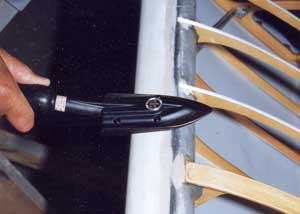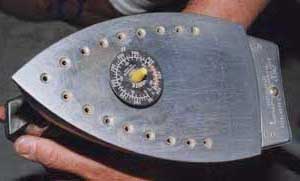|
 As
all who have covered aircraft with fabric know, there is that critical
element of stretching the fabric with a hot iron. I had to learn to be
precise with the temperature, since I was not especially skilled with the
handling of the iron. As
all who have covered aircraft with fabric know, there is that critical
element of stretching the fabric with a hot iron. I had to learn to be
precise with the temperature, since I was not especially skilled with the
handling of the iron.
� At 225�F
(152�C)
only the Poly-tack is melted, no shrinking is taking place .
� First shrinking at
275�F
(135�C)
� Second shrinking at 325�F
(163�C)
� Third shrinking at 350�F
(177�C)
Use Poly-tack with small iron at 325�F
to smooth the fringes of the zig-zag cut edges. Never stop - it will burn
holes into the fabric!
|



